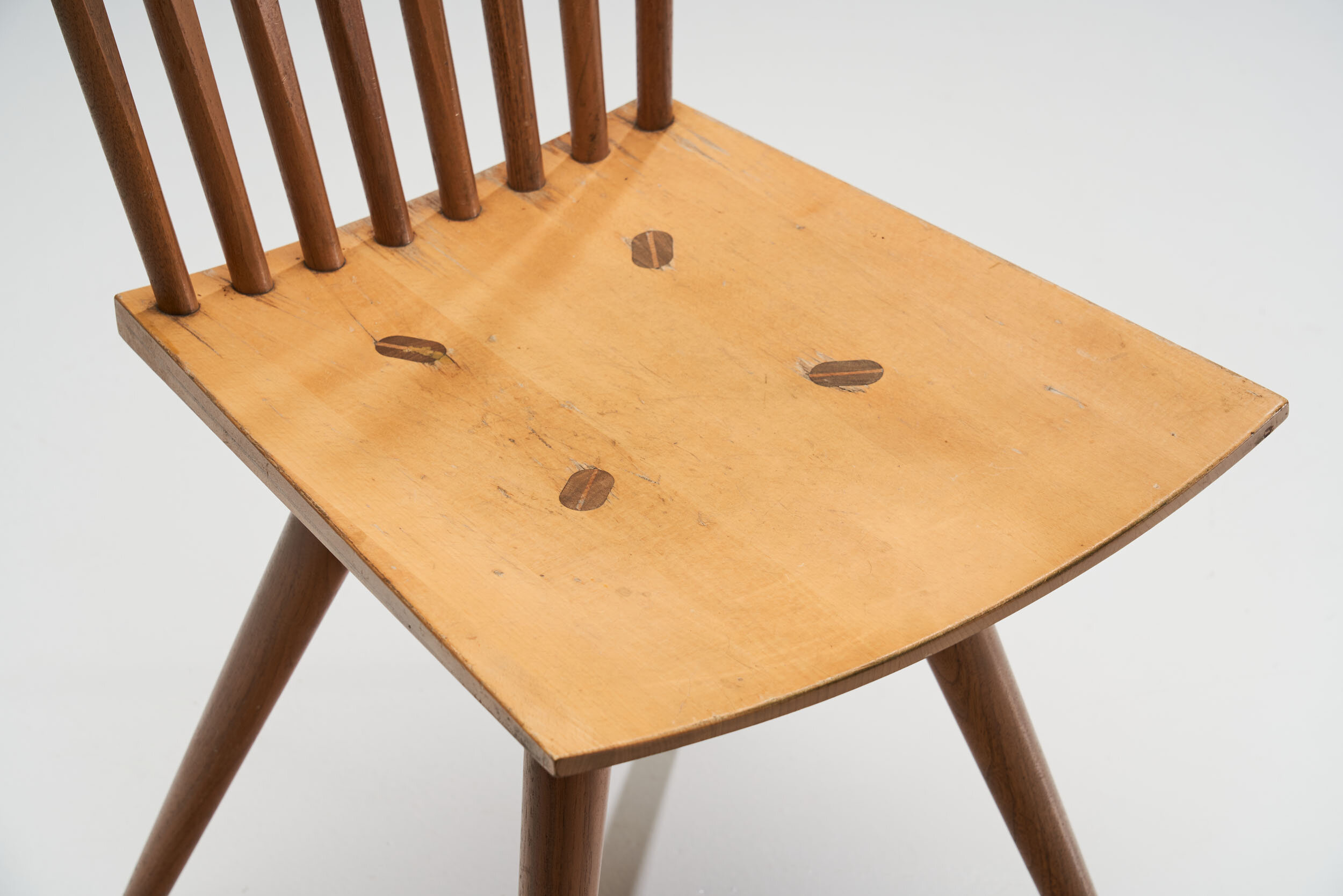Pair of "Mikado" chairs by Johannes Foersom and Peter Hiort-Lorenzen, Denmark 1990s (sold)















Pair of "Mikado" chairs by Johannes Foersom and Peter Hiort-Lorenzen, Denmark 1990s (sold)
This pair of Model J152 chairs by the Danish designer duo, Johannes Foersom and Peter Hiort-Lorenzen, is better known as the “Mikado” chair. The design dates to 1996, and is part of the display of chairs at Designmuseum Danmark
The Mikado is a modern interpretation of the 18th century English Windsor chair, whereby the chairs are based on a construction principle that uses the seat as the element that joins everything together. The chairs feature sculptural walnut backs and legs, while the seats are made of beech.
These visually one-of-a-kind chairs were manufactured by the Danish company Kvist Møbler A/S in the 1990s
SOLD
Condition:
In good vintage condition. Wear due to age and use. Item has marks and scratches. Veneer damage. Lacquer crackles.
Dimensions:
16.93 in. W x 17.33 in. D x 33.47 in. H; Seat height 16.93 in.
43 cm W x 44 cm D x 85 cm H; Seat height 43 cm
Exhibitions:
Winner of the Bo Bedre Furniture Prize in 1996. The chair won the prize for its characteristic design, combining untraditional ideas with beautiful craftsmanship, and the use of old cabinetmakers' techniques.
About the designer:
Foersom & Hiort-Lorenzen is a Danish design duo consisting of Johannes Foersom (born 1947) and Peter Hiort-Lorenzen (born 1943). They have been working together since 1977 and their design company is based on their close collaboration.
Foersom trained to become a cabinetmaker with Gustav Berthelsen in Copenhagen, completing his apprenticeship in 1969. He then attended the Arts and Crafts School from where he graduated in 1972. Hiort-Lorenzen on the other hand became a ship carpenter in 1962 and worked at Helsingør Shipyard. He then attended the Arts and Crafts School and the Royal Danish Academy of Fine Arts graduating in 1968. From 1975 to 2000, he was a teacher at the Danmarks Designskole.
The designer duo’s vision in their work is to create values with long duration, that stimulates a healthy development for people and their surroundings. Their work is based on high standards of cooperation, process and product, where knowledge and innovation are basal resources. They have won multiple awards for their furniture designs, the first being The Danish State Art’s Fund in 1970 and their latest being the 2005 Finn Juhl Prize. Their works are represented in many Danish museums, as well as international ones including the MoMA in New York. ~H.






















